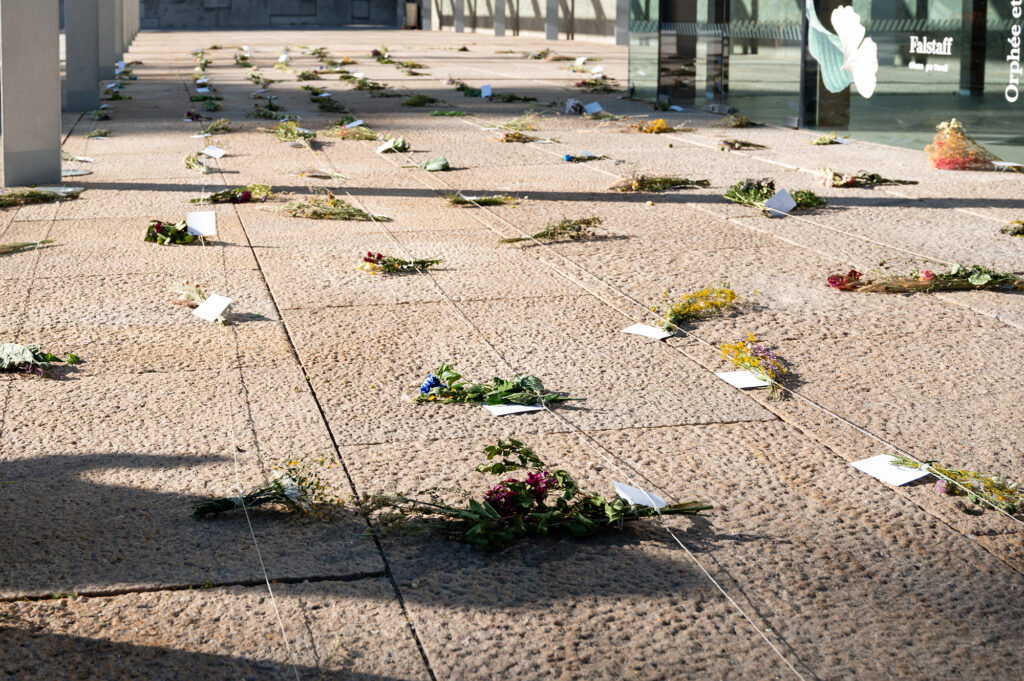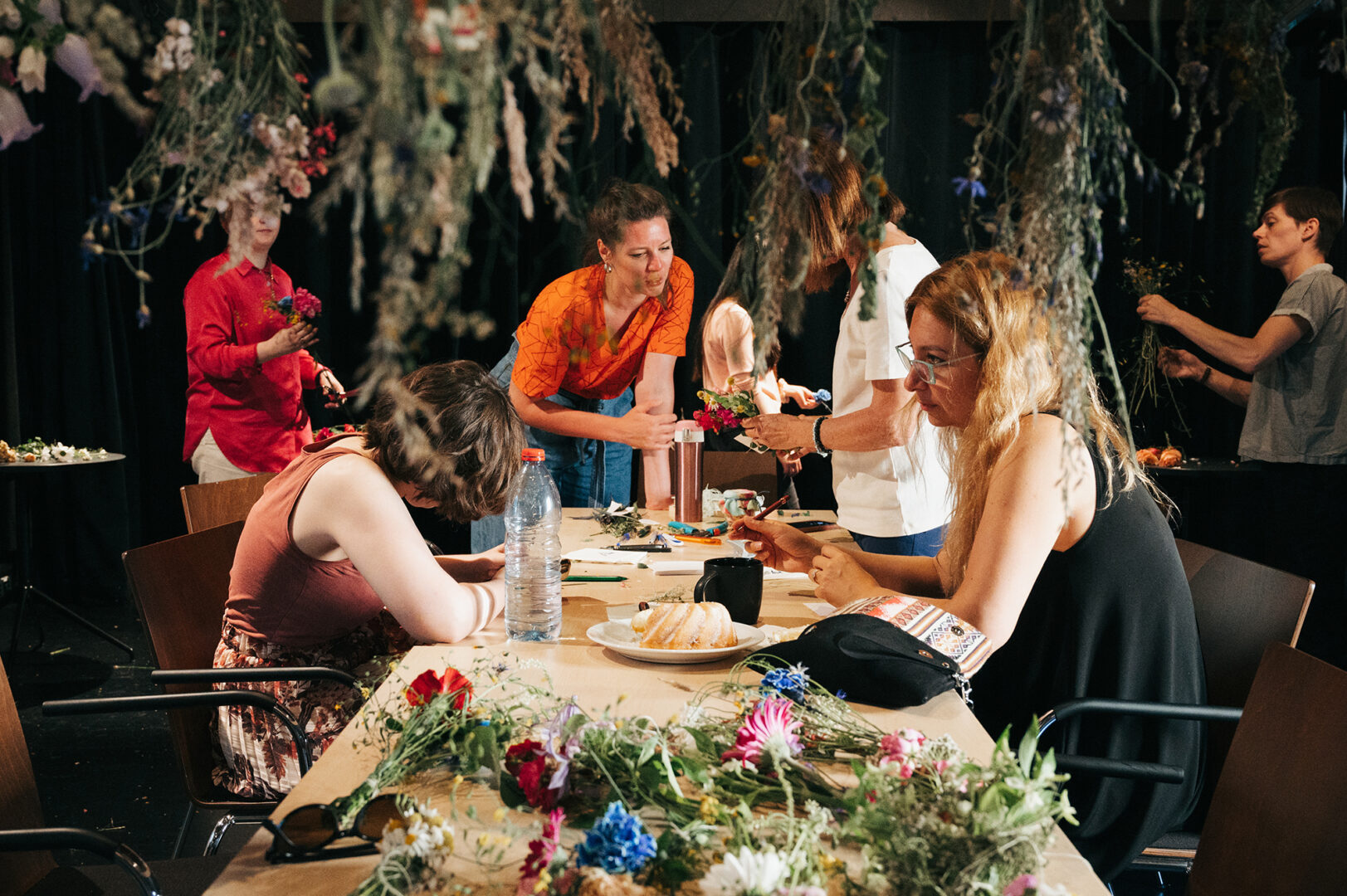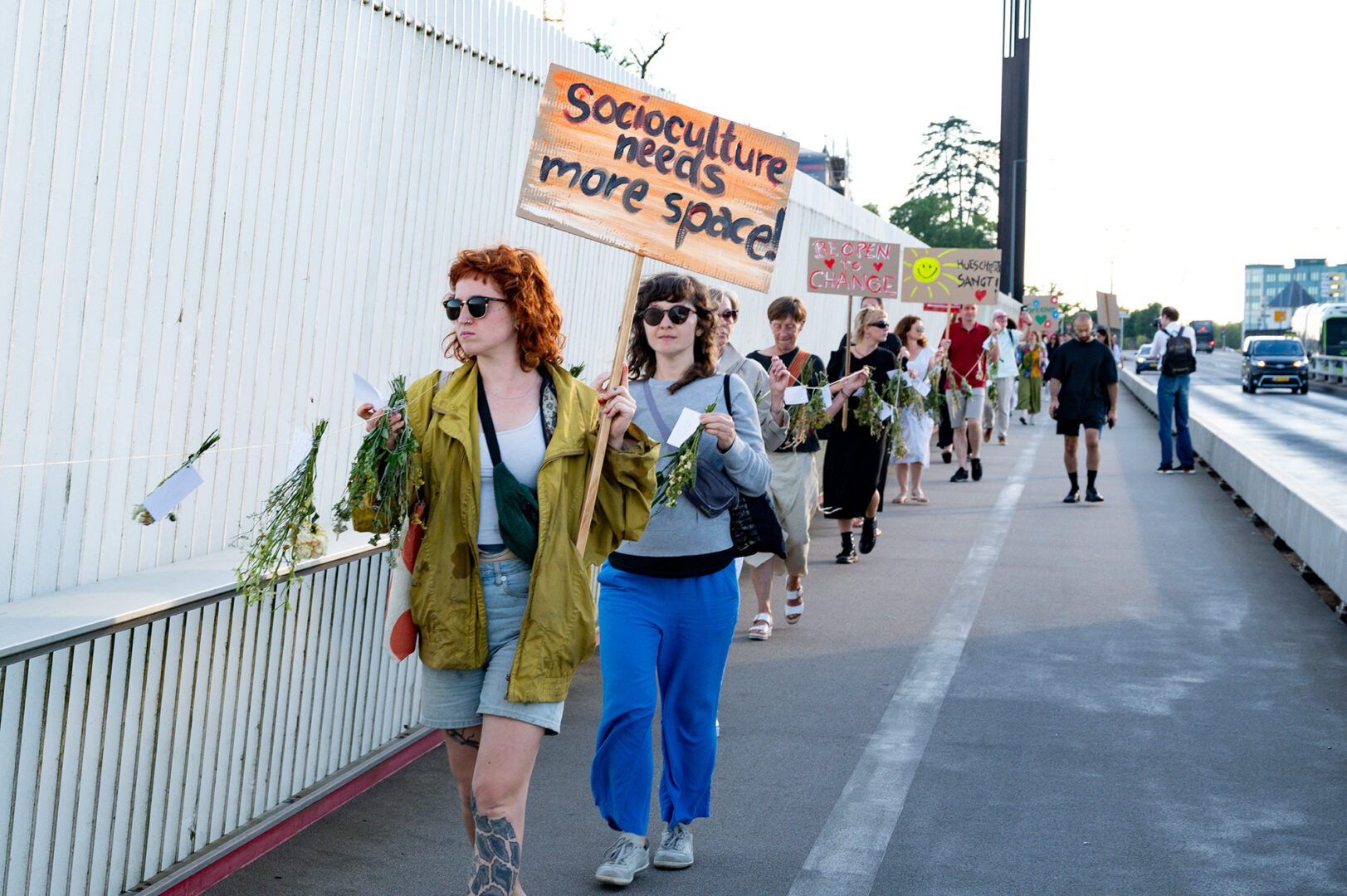The Manifestation
Back pictures: Inês Rebelo de Andrade
pictures: Inês Rebelo de Andrade
The Meaning of Resistance
by Jérôme Quiqueret
Whenever he approaches a museum, Lemi Ponifasio’s body instinctively recoils. The same visceral unease grips his whole being at the sight of a zoo. «Every time, I feel a dormant volcano boiling inside me,» he says. Childhood memories resurface, recalling his grandmother’s tales about German colonisers in Samoa, who took away inhabitants to exhibit in zoos and plundered treasures to hide in museums. Through this lens, zoos and museums emerge as twin faces of human notions of supremacy, subjugating both people and nature.

Drawing Lines: Museums as Fracture Points
When tackling the final phase of the red bridge project – a collaboration with Mudam Luxembourg – Musée d’Art Moderne Grand-Duc Jean – Ponifasio couldn’t ignore this context. It was unrealistic to expect him to play by the rules, even altered ones. The Samoan artist rejects the notion that Western museums can truly be decolonised. Their very foundations – colonialism, imperialism, and Eurocentrism – are too deeply ingrained. «Museums are shaped by and perpetuate Western cultural dominance,» Ponifasio argues. «Why would they want to change that?»
Indeed, museums showcase Western cultural achievements, reinforcing the supposed superiority of Western values and perspectives. «They’re not platforms for genuine cross-cultural understanding,» Ponifasio contends. «They’re fracture lines. Perhaps that’s for the best – it keeps us vigilant.»
Thus, Ponifasio envisioned a protest against these «monuments to barbarity», rather than an exhibition within one. He calls his performances «ceremonies» to avoid Western categorisations, and this was to be a «ceremony of outrage» – a challenge to the status quo.
Weaving a Web of Care
The Manifestation unfolded in three acts. First came a parade linking the three partner institutions of the red bridge project, using the red bridge that connects them and aptly gives its name to their triennial joint project. Choreographer Elisabeth Schilling led the preparations, using social media to engage communities in workshops, to realise Ponifasio’s vision: «Weaving a vegetal web of care.»

The centrepiece was a 200-metre rope adorned with dried flowers and self-affirming messages. Participants had to move in unison to keep the thread intact – a collaborative effort where interconnectedness, mindfulness, and care for plants were key for a seamless outcome. True to a principle of hers, Schilling emphasised bodily awareness and synchronised movement. On the day, participants crafted their own protest signs.

After the parade, the flower-message assemblages were distributed. This evoked the summer tradition of cutting, sharing, and preserving flowers to extend the season into winter – a gesture resonating with Ponifasio’s worldview. «Our relationship with nature mirrors our human interactions,» he explains. His art aims to make people «more aware of what it means to exist and how to share life with all». For Ponifasio, nature isn’t external to humanity, but integral to it.
By occupying Mudam’s surroundings rather than entering, Ponifasio challenged the museum’s authority. He equated public space with the museum, demystifying this «white cube».
The Manifestation then continued with local choir performances in front of the Philharmonie, where public space once again served as an alternative venue for community practices and concerns that typically lack access to the stage.

Revelation and Liberation
As night fell, the final act unfolded: an expiatory ceremony inspired by the French visionary Antonin Artaud, intensifying the unsettling, crepuscular mood woven around the spectators. Participants entered through a mock forced labour camp on Mudam’s forecourt. In a poignant role reversal, Lemi Ponifasio’s MAU company members – descendants of those once colonised – embodied the colonisers and camp guards.
The thirty or so «slaves» soon broke free from their wooden yokes to engage in a traditional rite. This performance was underscored by Artaud’s radio play, To Have Done with the Judgment of God, which, through incantatory prose, railing against America’s alleged superiority and nature-replacing productivism. «I prefer people who eat directly from their native soil,» Artaud’s text proclaims, echoed by several participants in The Manifestation. Projections on the museum walls evolved from a virtual inferno to the national flag’s embrace, alongside photographs taken by students from the Lycée des Arts et Métiers, who had documented the entire red bridge project.

As the final event in this red bridge project edition, The Manifestation deepened Ponifasio’s understanding of Luxembourg. His parting message to the country: «Luxembourg’s wealth alone isn’t enough. It’s reached a point where it can look beyond materialism and invest in humanity’s quest for meaning, purpose, and interconnection. Luxembourg’s cultural diversity is fascinating, but true diversity requires new modes of communication and self-revelation. This is a noble challenge, particularly for the three influential cultural institutions behind the red bridge project.»
Jérôme Quiqueret grew up in France, in the suburbs of Nancy. After completing secondary school with a scientific baccalaureate in 1997, he went on to study history at the University of Nancy, obtaining a master’s degree in 2002. He has lived in Luxembourg since 2013 and works as a journalist, contributing to publications such as Le Quotidien, Le Jeudi, Europaforum, and Tageblatt. His writing mainly covers topics related to society, culture, and the humanities. Additionally, he is the author of literary works with historical themes. His first book, Tout devait disparaître (published in 2022 by Capybarabooks), earned him the Servais Prize in 2023.
Translation: Neel Chrillesen





